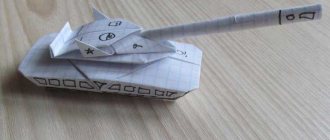Relay games for children 5, 6, 7 years old
Outdoor relay games for children 5-7 years old
Rules of relay games
❀ An equal number of participants who are divided into two teams.
❀ Equal physical strength.
❀ Presence of an adult presenter. He gives the command “Let’s start!”, counts the points and makes sure that the players do not break the rules: do not run out ahead of time, put objects in place, and pass the baton to others on time.
❀ In order for children to understand the rules of the game well, a training competition is organized, without scoring points.
From about 5 years old, children are increasingly attracted to group, team relay games. After all, they have a spirit of competition. In them they learn what a team and the shoulder of a comrade are. Children begin to understand how important it is to obey the rules of the group, to go towards the goal and feel their importance, to make their small contribution to a big cause.
In everyday life it is not always possible to organize a relay race. After all, to create it you need participants - a large group of children. However, the relay can be played with four children. And if moms and dads join them, the game will turn into real “fun starts.” Relay races are always spectacular. It’s good if a support group gathers around you: it will be more fun for both spectators and participants. And if you were unable to gather two teams, play in a narrower circle, without competitive fervor, where friendship and good mood win, where the process is important for the sake of the process itself.
“Unload the car.” The teams have a simple task - to unload the car with bricks. To do this, two boxes with cubes (“brick machines”) are placed on one side of the court, and the players are located on the other side. The participants’ task is to run to the “car”, take the “brick”, return to the starting line, put the burden in the designated place and pass the baton to another participant. The team that moves all the “bricks” the fastest wins.
“Jump through the hoops.” Two teams stand behind each other in a column. 3-4 hoops are laid out on the site. The participants’ task is to run to the turntable (it could be a chair, a bush, a stone, a pillar, or some object) and return back to the starting line. On the way forward, you need to overcome obstacles: pick up each hoop, thread it through yourself and put it in place.
"Move the watermelons" . For this relay you will need six balls of different sizes (three for each team). Each participant is given a task: to carry three “watermelons” to the turntable and return back. The one who dropped the “watermelons” collects them and continues moving towards the starting line. Holding three balls in your hands and running at the same time is a difficult task. Therefore, players move slowly and carefully.
"Ball Competition" . Children stand in a column one after another (at a distance of one step) and pass the ball over their heads to a neighbor behind their back. When the ball falls into the hands of the player completing the column, he runs forward and becomes the head of the group, the rest take a step back. The game continues until all participants try themselves as the leader of the column. There is another variation of this game: pass the ball not over the head, but between the players’ legs.
"The Big Picture" . To play this game, you will need two easels with blank sheets of paper attached to them (you can simplify the task and attach two sheets of Whatman paper to the wall). Place felt-tip pens or thick-tip markers nearby. The presenter gives the teams a task - to paint a picture: a portrait of a person, a cat, a house, a robot, etc. (the task should be simple). Each participant must run to the “easel”, draw one detail of the image and return back. The first team to present its “masterpiece” wins.
"Sharp Shooters" . Two hoops are placed on the site. From a short distance, the participants in the game must hit the hoop with tennis balls. Whoever has the most hits wins.
"Faster, higher, stronger!" By the age of five, most outdoor games for children acquire a sporting nature. "Faster, higher, stronger!" - this Olympic motto becomes relevant and vital for older preschoolers. Both girls and boys are equally interested in active games with elements of running, jumping, and overcoming various obstacles.
Similar articles:
Outdoor games for children of senior preschool and primary school age
Outdoor games for children of the preparatory group indoors
Outdoor games in the second junior group
Outdoor games for children 3-5 years old in kindergarten
Outdoor games for children under 1 year old
RELAY RACE GAMES FOR PRESCHOOL CHILDREN
RELAY RACE GAMES FOR PRESCHOOL CHILDREN
Kulikova Svetlana Gennadievna,
physical education instructor,
MBDOU "DSOV" No. 113
Bratsk, Irkutsk region
Having worked with children for more than 30 years, I can say with full responsibility that for children of any age the most interesting and effective form of conducting classes is games; mobile, sports and relay races.
Among the various means of physical education for preschoolers, relay games occupy a large place.
The kindergarten program provides for the widespread use of outdoor games. They are recommended to be carried out at different times of the day.
With the help of outdoor games, children can develop the most important physical qualities: agility, strength, endurance, cultivate endurance, perseverance, courage, determination, resourcefulness.
In the improvement of motor skills and abilities, the formation of moral and volitional personality traits, relay race games play a special role.
Relay games are one of the varieties of plotless outdoor games with elements of competition. They are quite accessible to children not only of senior preschool age, but also to children of the middle group.
In each relay race, a number of tasks are simultaneously solved - consolidating and improving the skills of basic movements, developing spatial orientation, nurturing courage, determination, organization, discipline, and developing such properties as accuracy, speed, coordination of movements. The competitive moment increases children's interest in games, promotes the concentration of their attention, and allows them to increase the motor, emotional and creative activity of preschoolers. With qualified pedagogical guidance, these games promote positive relationships among children.
Thus, in each game there is a comprehensive development of the physical, moral and volitional qualities of children.
A distinctive feature of relay games is the execution of combined actions in a row, one or two children at a time from each team.
The following types of movements and their combinations predominate in games:
- running with throwing, climbing or climbing;
- running with jumping or jumping over obstacles;
- running while maintaining balance on various equipment;
- running while dribbling the ball with one hand and throwing it into a basketball basket;
- running with carrying balls, hoops and other objects and other tasks that are performed in the prescribed manner.
Each game, depending on its complexity, contains a certain combination of basic movements familiar to children.
To organize a relay game, it is necessary to divide the children into teams between which the competition takes place. In any game, children perform all actions in a prescribed order, at a given or maximum possible pace. The rules of the games are designed in such a way that they contribute to the manifestation of initiative and resourcefulness of each child, therefore the physical education instructor must ensure their conscientious and precise implementation.
In relay games, children are more independent and active than during physical exercises. By participating in games, they learn the norms of relationships in a team, learn to fairly evaluate the actions of their comrades, achieve victory in competition, overcome their own timidity, and fulfill the requirements.
The specificity of relay races is that short periods of increased physical activity alternate with rest intervals where physical activity is kept to a minimum. But the emotional intensity of this period remains high, since the children’s attention to further completion of tasks does not weaken. Therefore, throughout the game, the physical education instructor needs to regulate the emotional load, teach children to maintain a sense of proportion, and avoid excessive excitement; for this purpose, competitions can be held between relay races; guessing riddles, competitions between two or more participants.
Relay games are based on solving a number of motor tasks that require significant effort from children. In this regard, preschoolers should first be introduced to simpler games, and then gradually move on to complex ones. At the initial stages of learning relay games, it is necessary to make demands on the correctness and precision of the children’s movements, and gradually increase their speed. To do this, it is best to conduct relay races with an object: (ball, wheelbarrow, car...) Complicated versions of games can be offered only after children have mastered the basic rules and content of simple games and provided they have mastered the necessary motor skills. The complexity of relay race games should be done in the following way: gradually increase the number of obstacles in the game, change their location and methods of completing tasks, introduce additional, previously learned movements, change the size and weight of objects used in the game, increase the area for games, complicate the rules governing interactions children.
In organizing and conducting the relay game, a special role is assigned to the teacher. He must know well the content of the game and its rules in order to clearly, clearly and consistently explain them to the children, as well as set out the conditions for determining the winner.
The teacher needs to carefully consider how to place equipment in the room so that there are no delays during the lesson.
An important point in organizing and conducting relay games is the distribution of children into teams of equal strength.
At the initial stages of learning the game, the leading place is given to the demonstration of movements, which must be supported by explanations. Even older preschoolers find it easier to copy the teacher’s example, so when learning new complex relay games, you can sometimes use the technique of practically completing a game task following the instructor. At subsequent stages of training, the ratio of demonstration and explanation techniques changes.
Practice shows that the purposeful conduct of relay race games in physical education classes contributes to the development of agility, speed, endurance in children, and also has a positive effect on improving the functioning of the child’s body as a whole.
2





